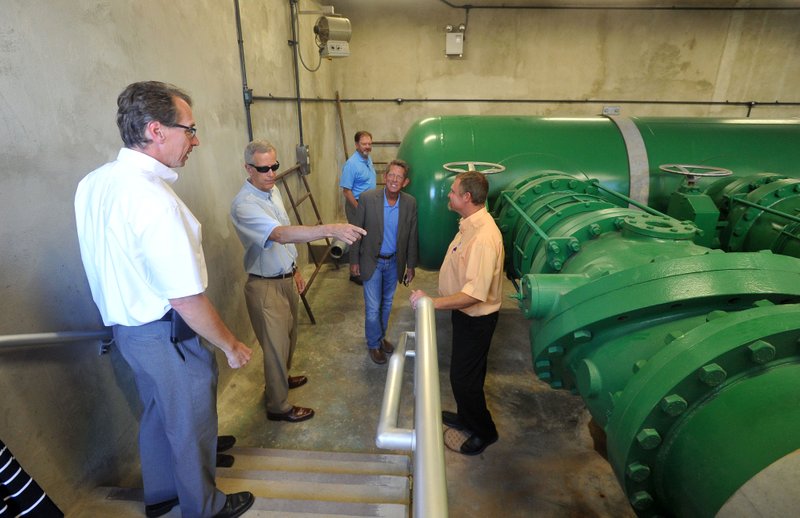LOWELL -- Results of a cost-comparison study for water protection measures by the Beaver Water District will be released next fall.
The district's board voted Thursday to approve a $99,922 bid by consulting firm Cadmus for a Source Water Protection Economic Feasibility Analysis. The bid came in under the $110,000 budgeted, said Bob Morgan, manager of environmental quality.
Web watch
Learn more about Beaver Water District by visiting www.bwdh2o.org.
Beaver Lake water is treated by the district and sold to cities. Board members toured an intake Thursday where water from the lake enters the water treatment system, noting the system is ready to expand as the area grows.
The lake's quality has a direct affect on the amount of treatment the water must undergo, district employees told the board.
The need for water source protection outstrips the amount of money available through the district and the needs must be prioritized, said Larry Lloyd, chief operating officer at the district.
The district is contributing about $700,000 a year to conservation, Morgan said.
Protecting the water quality will save consumers money because treatment costs are reduced, said Angela Danovi, regional project manager for Ozarks Water Watch in the Beaver Lake watershed. The organization promotes water quality in the upper White River basin in Northwest Arkansas and Southwest Missouri.
Ozarks Water Watch has monitoring projects that collect data on water quality and the condition of the streams feeding the lake, Danovi said.
The organization has a septic system remediation program and a certification program for marinas to prove they keep chemicals, gasoline and waste out of the water.
Education is also a priority for Danovi. Allowing cattle in the stream bed can lower water quality, as can residents dumping paint or chemicals into storm drains or where they can leach into the water that flows into the lake.
"This is our drinking water source. This is what there is for us for the foreseeable future," Danovi said.
A comprehensive plan for protecting the water source was put into place in 2012. That plan will be revised for 2018 so the cost analysis comes at a good time, Morgan said.
Not every measure in the plan is affordable for the district to do alone, executives said.
"When you look at the actual cost we need about $10 million a year," Morgan said.
The cost study notes a collaborative watershed council will be developed to look at the issue.
Economists and scientists will prioritize key points, Lloyd said. The study will give the district a road map of what will give it the biggest bang for the buck.
"It really kind of takes watershed protection and puts it more in a business mode," Lloyd said.
District meetings with the consulting team start in October and the final project report will be released Aug. 31.
NW News on 09/18/2015

